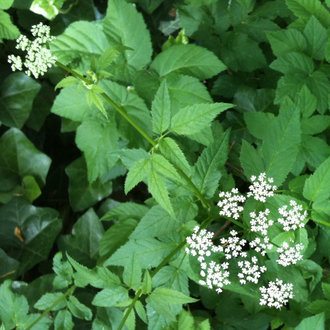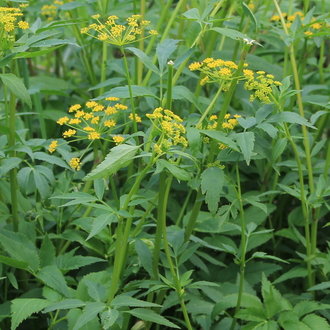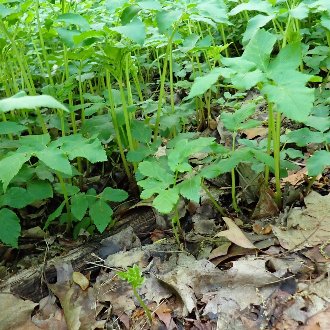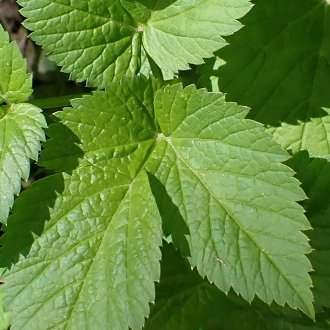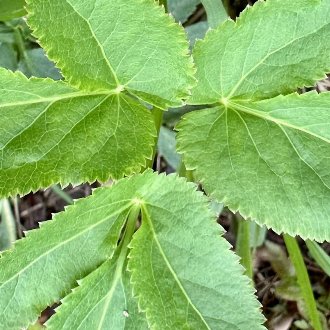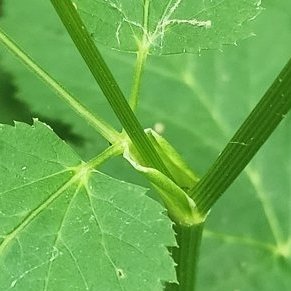Bishop's Goutweed vs Golden Alexanders
This guide is under construction and has not been published yet. It may have errors. When in doubt, double-check other sources for definitive ID.These two species, one native and one invasive, can sometimes be confused when viewing foliage alone, as both have similar compound leaves, and grow to a similar height. When blooming, they are easily distinguished by flower color, and the rest of the time they can be distinguished by differences in growth habit and subtle differences in leaf shape.
Bishop's Goutweed (Aegopodium podagraria) | Golden Alexanders (Zizia aurea) |
An herbaceous perennial, native to Europe, which spreads aggressively, forming large colonies, by underground rhizomes. Escaped from cultivation at various locations across North America, mostly in the northeast, where it is considered invasive. | A carrot-family perennial of moist to mesic, sunny areas, with yellow blossoms, native to eastern North America. |
Flowers are white. Photo © botanygirl, CC BY 4.0. | Flowers are yellow. Photo © Peter Nathaniel Boyer, CC BY 4.0. |
Plants are rhizomatous, forming extensive colonies through vegetative reproduction. Mature plants do not always flower, especially in heavy shade. Photo © Sus scrofa, CC BY 4.0. | Plants have a clumping habit and only form colonies through reproducing by seed. Mature plants nearly always flower, but plants cannot persist in as heavy shade. |
Photo © Steven Lamonde, CC BY 4.0. | Photo © Emily Summerbell, CC BY 4.0. |
Photo © C. Ben Schwamb, CC BY 4.0. |
References & External Resources
These short lists show only links helpful for ID. For a complete list of references and resources also covering other aspects of ecology, visit the links section of the full article on each plant, which is the first entry here.



